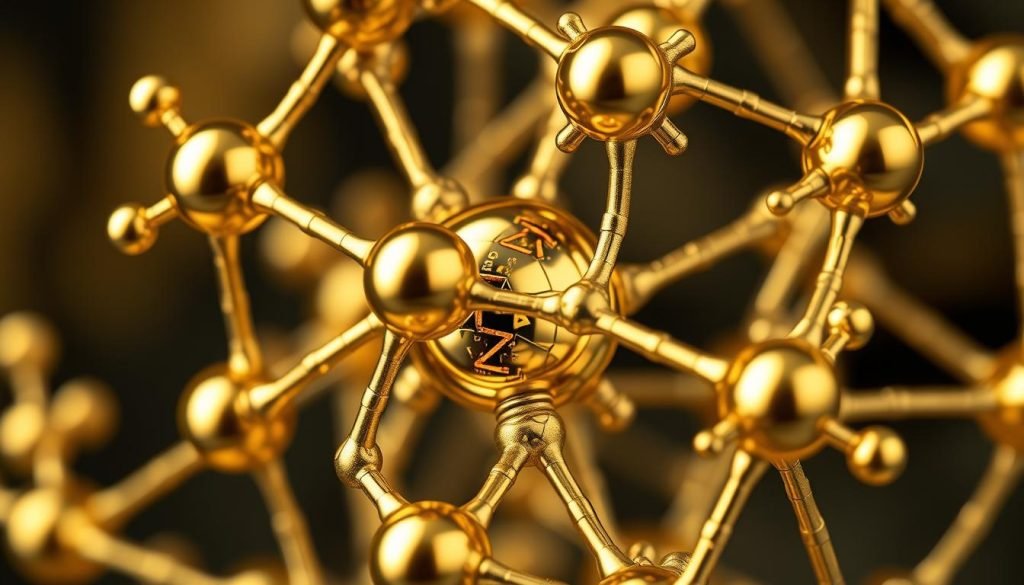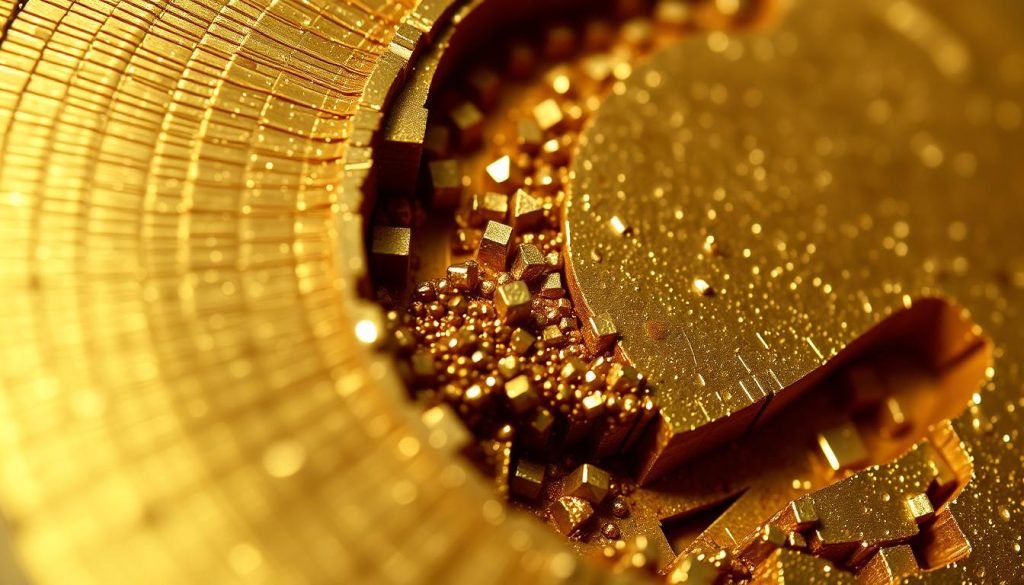Have you ever wondered whether brass is attracted to magnets? You’re not alone. The relationship between brass and magnetism is a topic of curiosity for many.

Brass, an alloy made from copper and zinc, is widely used in various applications. Understanding its properties, including its magnetic characteristics, is essential. Brass is not naturally ferromagnetic, unlike materials like iron and nickel. This is due to the paired electrons in the orbitals of its constituent elements, copper and zinc, which cancel out any magnetic movement.
This fundamental property makes brass a unique material with specific uses. As we explore further, you’ll discover why brass behaves differently in magnetic fields and its practical implications.
Understanding Brass: Composition and Properties
Understanding the properties of brass begins with exploring its composition and the roles of its primary elements. You will gain insight into how this versatile alloy has become a cornerstone in various industries.
What is Brass?
Brass is a man-made alloy, primarily composed of copper and zinc. It’s not a naturally occurring metal, but its unique properties have made it a material of choice for many applications since its discovery around 5000 BCE.
The Composition of Brass
The composition of brass is mainly a mix of copper and zinc, with typical ratios ranging between 60-70% copper and 30-40% zinc. Adjusting these ratios creates different grades of brass with varying properties.
Copper and Zinc Ratios
The proportions of copper and zinc in brass define its grade and characteristics. Copper contributes to its excellent thermal and electrical conductivity, while zinc enhances its strength and machinability.
Common Brass Alloys
Various brass alloys exist, including yellow brass, red brass, and naval brass. Additional elements like lead, tin, or aluminum are often added to modify their properties for specific applications.
Physical and Chemical Properties of Brass
Brass features an array of physical properties, including a golden appearance, excellent malleability, good corrosion resistance, and a relatively low melting point. Its chemical properties include resistance to oxidation, although this can vary compared to pure copper.
The composition of brass directly influences its properties like hardness, ductility, and workability, making certain types more suitable for specific applications. Standardized designation systems help identify different brass alloys based on their composition and properties.
Is Brass Magnetic? The Simple Answer
Understanding the magnetic behavior of brass requires a closer look at its molecular structure. Brass is an alloy made primarily from copper and zinc, and its magnetic properties are determined by the characteristics of these elements.
Testing Brass with a Magnet
A simple way to verify if an object is made of brass is by using a magnet. Genuine brass is not attracted to magnets because it is not ferromagnetic. You can perform a quick test by holding a magnet close to the object in question. If it’s attracted to the magnet, it’s likely not made of pure brass.
Diamagnetic Properties of Brass
Brass exhibits diamagnetic properties, meaning it is weakly repelled by a magnetic field. This is because the electron shells of copper and zinc are filled, and there are no loose electrons to be attracted to a magnet. As a result, brass does not exhibit significant magnetic behavior under normal conditions.
The diamagnetic nature of brass has practical implications. For instance, it can be used in applications where magnetic interference needs to be minimized. Understanding whether brass is magnetic or not helps in identifying genuine brass items and distinguishing them from brass-plated or other alloys.
The Science Behind Brass and Magnetism
To comprehend why brass isn’t naturally magnetic, we need to explore the fundamental principles of magnetism at the atomic level. You will gain a deeper understanding of how the atomic structure of copper and zinc, the primary components of brass, influences its magnetic properties.

Understanding Magnetism at the Atomic Level
Magnetism originates from the movement of electric charges and the alignment of unpaired electrons in atoms. You have learned that the atomic structure of elements determines their magnetic behavior. In the case of brass, the combination of copper and zinc results in a unique electron configuration that affects its magnetic properties.
Why Copper and Zinc Are Non-Magnetic
Both copper and zinc have paired electrons in their orbitals, which cancel out each other’s magnetic moments. For instance, the 3d orbital of copper is filled with paired electrons, and similarly, the 4s orbital of zinc has paired electrons. This pairing results in no net magnetic moment, making copper and zinc non-magnetic.
Electron Configuration and Magnetic Properties
The electron configuration of an atom plays a crucial role in determining its magnetic properties. You will understand that the difference between ferromagnetic, paramagnetic, and diamagnetic materials lies in their atomic structure and electron configuration.
Paired vs. Unpaired Electrons
In atoms, paired electrons with opposite spins cancel out each other’s magnetic moments, resulting in no net magnetic field. On the other hand, unpaired electrons contribute to the magnetic behavior of an element. Brass, being composed of copper and zinc, has paired electrons, which explains its non-magnetic nature.
Magnetic Moments in Brass
The diamagnetic property of brass causes it to generate a weak opposing field when placed in an external magnetic field, resulting in slight repulsion rather than attraction. You will appreciate how the electron configuration in brass’s crystal structure prevents the formation of magnetic domains necessary for ferromagnetic behavior.
By understanding the science behind brass and magnetism, you can appreciate why certain materials like brass cannot be permanently magnetized under normal conditions. The principles of quantum mechanics explain the magnetic behavior of materials at the atomic level, providing valuable insights into the properties of brass.
Factors That Can Affect Brass Magnetism
While brass is generally non-magnetic, several factors can influence its magnetic properties. Understanding these factors is crucial for applications where non-magnetic materials are essential.
Impurities in Brass
The presence of impurities can significantly alter the magnetic properties of brass. When ferromagnetic elements like iron or nickel are present, even in small amounts, they can cause brass to exhibit noticeable magnetic properties.
Iron and Nickel Content
Iron and nickel are common impurities in brass that can induce magnetic behavior. The threshold percentage of these elements required to make brass magnetic can vary, but even trace amounts can have a significant impact.
Other Magnetic Elements
Besides iron and nickel, other magnetic elements like cobalt can also affect the magnetic properties of brass. These elements can change the magnetic behavior of brass, making it more susceptible to magnetization.
Manufacturing and Processing Effects
The manufacturing process can also influence the magnetic behavior of brass. Processes like casting, forging, and machining can affect the microstructure of brass, potentially creating conditions that enable weak magnetic properties.
Rapid cooling during the manufacturing process can create structural anomalies that might enable weak magnetic properties in otherwise non-magnetic brass.
Temperature and Its Impact on Magnetic Properties
Temperature extremes can temporarily alter the magnetic response of brass. Both very high and very low temperatures can affect the atomic structure of brass, influencing its magnetic behavior.
Mechanical stress and deformation can also potentially create slight magnetic effects in brass through changes in its crystalline structure. Additionally, surface treatments and plating with magnetic materials can give brass objects the appearance of being magnetic when tested superficially.
Can Brass Be Magnetized? Methods and Limitations
Understanding if brass can be magnetized requires delving into its properties and the techniques used to induce magnetism. Brass, an alloy primarily made of copper and zinc, is not naturally magnetic. However, under certain conditions, it can exhibit magnetic properties.
Electromagnetic Induction
One method to magnetize brass is through electromagnetic induction. When an electric current is passed through brass, it creates a temporary magnetic field. This magnetic field dissipates once the current is removed.
Alloying with Magnetic Materials
Another approach is to alloy brass with ferromagnetic elements like iron or nickel during manufacturing. This process can create brass variants with enhanced magnetic properties.
Special Treatments and Processes
Special treatments such as annealing can affect the crystalline structure of brass, potentially influencing its magnetic response.
Annealing Effects
Annealing involves heating brass to a specific temperature and then cooling it. This process can alter its magnetic properties.
Extreme Temperature Exposure
Exposure to extremely low temperatures can also impact the magnetic behavior of brass by affecting electron behavior.
In conclusion, while pure brass is not naturally magnetic, it can be made to exhibit magnetic properties through various methods, including electromagnetic induction, alloying with magnetic materials, and special treatments. However, any magnetism induced in brass is typically weak and temporary.
Practical Applications of Non-Magnetic Brass

Brass’s unique combination of properties, including its non-magnetic nature, makes it suitable for numerous uses. You can find brass being utilized in various industries where its non-magnetic properties are beneficial.
Musical Instruments
Brass is the preferred metal for making musical instruments like trumpets, trombones, and tubas. Its non-magnetic nature ensures that it doesn’t interfere with sound production, while its acoustic properties enhance the quality of the sound. Many musicians appreciate brass instruments for their rich tones and durability.
Electrical Components and Wiring
The combination of brass’s non-magnetic properties and electrical conductivity makes it valuable for electrical components. It’s used in terminals, connectors, and switches, particularly in environments where magnetic interference must be avoided. This ensures reliable performance and safety in electrical systems.
Navigation and Precision Instruments
For navigation instruments, compasses, and precision measuring devices, non-magnetic materials are crucial. Brass is used here because its non-magnetic nature prevents interference with the sensitivity of these instruments, ensuring accurate readings and reliable performance.
Plumbing and Decorative Hardware
Brass is extensively used in plumbing fixtures, valves, and fittings due to its corrosion resistance and non-magnetic properties. These characteristics prevent mineral buildup in water systems, making brass a practical choice for plumbing. Additionally, its aesthetic appeal makes it suitable for decorative hardware and architectural elements.
Industrial Applications
In industrial settings, brass’s non-magnetic nature makes it ideal for applications in explosive environments where spark prevention is critical. It’s also used in certain medical equipment, laboratory instruments, and marine applications where its properties are beneficial.
By understanding the various applications of non-magnetic brass, you can appreciate its versatility and the value it brings to different industries. Whether it’s enhancing sound quality in musical instruments or ensuring accuracy in navigation tools, brass plays a vital role.
Conclusion
Ultimately, brass stands out as a versatile, non-magnetic material in modern manufacturing.
You now understand that brass is not attracted to magnets due to its diamagnetic properties, which arise from the paired electron configurations of copper and zinc. Factors such as impurities, manufacturing processes, and temperature can influence brass’s magnetic properties, but it remains largely non-magnetic.
Brass’s unique characteristics, including excellent machinability, corrosion resistance, and durability, make it a superior choice for various applications, from musical instruments to electrical components and precision instruments. Understanding brass’s magnetic properties is valuable when selecting materials or authenticating brass items.




